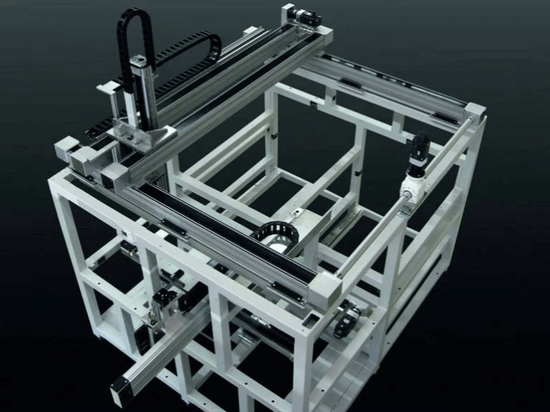
#Product Trends
A Guide to Stainless Steels for Linear Motion Components
To specify individual grades of stainless steel.
For applications that involve corrosive environments, designers of linear motion systems can take precautions such as using covers to protect vulnerable components, ordering parts with special coatings or platings, and strategically placing sensitive components within the machine or system to minimize their exposure to hazardous liquids or fumes.
But some applications — due to the nature of the contamination or to comply with industry regulations — require the use of stainless steel materials wherever possible. However, there are many steel alloys that make up what we generally refer to as “stainless steels,” and manufacturers offer linear motion components and sub-components in a variety of different stainless steel grades.
To help you navigate the range of corrosion-resistant linear motion products, here’s a primer on the most common stainless steel options, along with examples of where each one is typically used in linear motion systems.
There are four main families of stainless steels, characterized by their crystalline structure, or arrangement of atoms: austenitic, ferritic, duplex (mixed austenitic-ferritic), and martensitic. Most stainless steels used in linear bearing applications are in the austenitic and martensitic families. Austenitic stainless steels are chromium-nickel alloys which can have other elements — such as molybdenum, manganese, and nitrogen — added. Martensitic stainless steels are also chromium alloys, but with less chromium and more carbon than austenitic types. This makes martensitic stainless steels harder — but less corrosion-resistant — than austenitic types.
The most popular types of stainless steels are in the austenitic family, particularly 316 and 304 grades. The most significant difference between 316 and 304 stainless steel is that 316 contains molybdenum, which gives it very high corrosion resistance — particularly for environments with chlorine or saline. In fact, 316 stainless is sometimes referred to as “marine-grade stainless.” There is also a 316L (“L” = “light”) grade of stainless, which has a lower carbon content than 316, making it more corrosion-resistant.
Although 304 stainless is the most commonly used austenitic grade, 316 and 316L grades are typically preferred for applications such as food processing, semiconductor, and pharmaceutical manufacturing. In linear motion systems, 300-series stainless materials are typically used for recirculation components, lube fittings, and other non-load-bearing parts.
Because they’re harder than austenitic types and can better handle extreme pressure and Hertzian stresses, martensitic stainless steels, such as 440 grades, are often used for load-bearing components such as balls, shafts, and guide rails. Other critical components, such as bearing housings, are also commonly made from martensitic stainless steels.
Another form of martensitic stainless steel — precipitation hardening martensitic, such as grade 630 — is sometimes used for ball screw shafts, because it has high strength and hardness after heat treating, with corrosion-resistance similar to 304 stainless.
Each manufacturer has different offerings in terms of the grade of stainless steel used for each component of the linear motion system. For example, some manufacturers use grade 440C stainless steel for balls, while others use grade 440B or grade 431. So it’s important to ensure that the grade of stainless steel used is appropriate for the chemical or type of contamination that it will be exposed to in the application.
The grade of stainless steel used will also affect the static and dynamic load capacities of the system, so be sure to use the appropriate (reduced) load capacities when performing load and life calculations.






